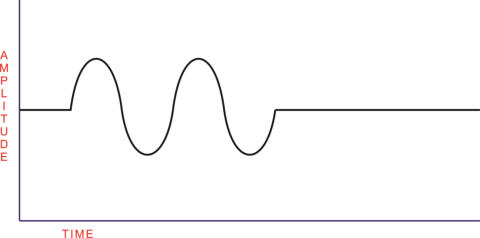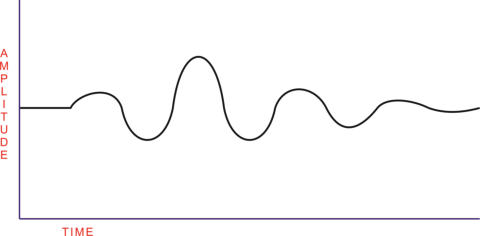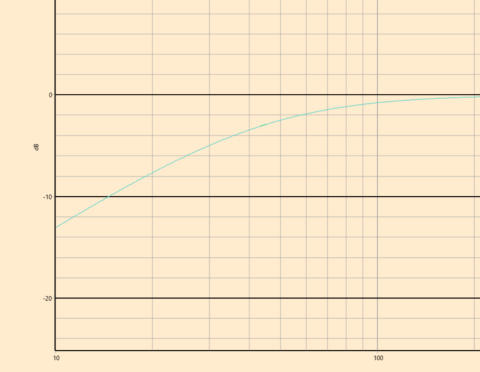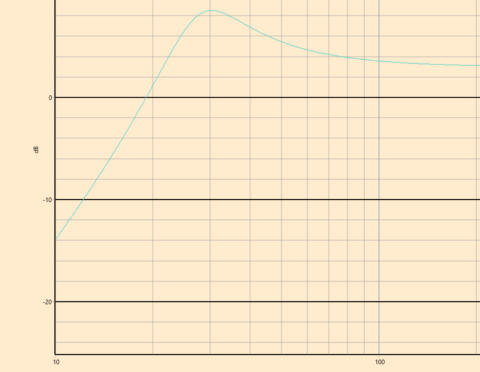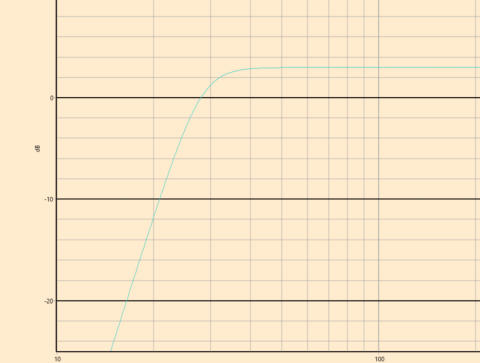
#3 A NEW AND SUPERIOR BASS SYSTEM ALIGNMENT
This idea is one of two substantial advances in bass system design that took me some time to discover.
Conventional vented alignments have always been a compromise between two opposing goals. You want
extension down to as low a frequency as possible and you want the woofer to faithfully follow the signal for
best resolution. Too bad, those goals trade against each other, because a vented alignment is a resonant
system; it achieves its extension by ringing. Again, ringing is bad; energy is absorbed and released later. So this
tricky bit of engineering involves “splitting the baby”. Some ringing, yes, but just enough to get a full bodied
sound, but not so much that it sounds tubby and loose.
I should note that, owing to infernal “spec chasing” and the marketing need for “showroom pzazz”, many
designers stray in favor of extension.
Let’s look at this graphically. To make the point easy to see, we’ll work with a signal that starts and stops
abruptly, called a gated sine wave.
By observing what comes out of the speaker, one can evaluate how well the system starts and stops.
Ideally, the output will look like input, but a vented alignment will actually do this: slow to rise as the
resonant system absorbs energy, then slow to stop as it rings on. The inside joke is, you get all the
bass you paid for, just a little late. In the worst cases, the bass actually sounds like it’s slow and off
the pace, because it is.
All these years, the most savvy designers have wanted to build bass systems for best signal tracking, and have
always known how to do that. Use a woofer with a very coercive motor and a light moving system. Basic
Newtonian physics: F=MA. The lower the Mass and the higher the Force, the greater will be the Acceleration.
Place that woofer in a bass alignment called “critically damped” - just the right amount of “air spring” in a closed
box and BANG, you get signal tracking like this:
Great, right? Nope. You get no low bass. The moving mass is low, there is minimal ringing, so you get
unacceptably rolled-off bass. You’ve never heard one of these on a showroom floor. If you had, you’d’ve
thought, “Wow, that’s quick and resolving, but where’s the bass?”
The solution is simple, and constitutes the first new bass system alignment in my lifetime. Just as DSP gives us
the power to up our DR game, as we discussed in section #2, DSP gives us the tool we need here. Simple: use
DSP to force that, otherwise superb, system to make low bass! Another free lunch? Well, not exactly, the idea
does require gobs of power and the driver does need to be robust with great cooling.
Short and sweet, we run a critically damped system, equalized with boost, and combined with a high pass filter.
Let’s say our critically damped system’s acoustic output looks like this:
We apply a high pass filter with boost like this:
Voila! Those two functions sum to this:
The icing on the cake is that this alignment takes up less space than its vented counterpart.
Smaller and better? Just my two cents - any designer who is using DSP, but who is still using vents or passive
radiators to make low bass, just hasn’t figured this out yet. This is probably the #1 reason why Next Gen will
destroy conventional audio in a head-to-head sound off.
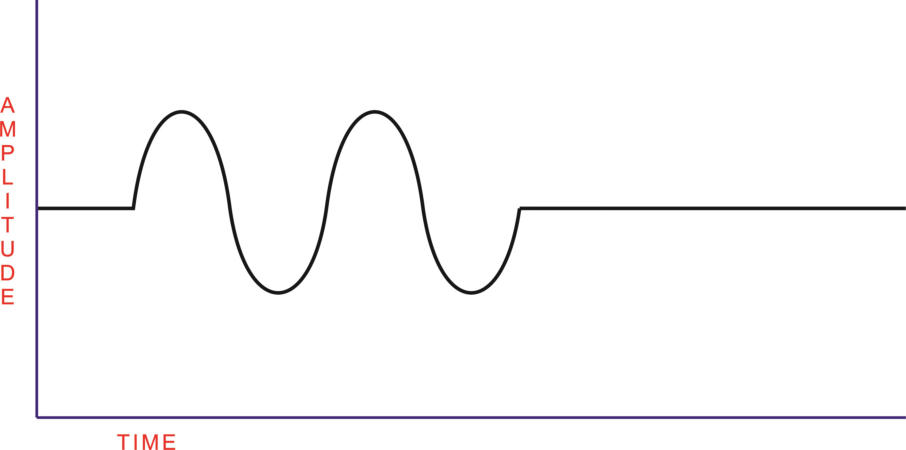
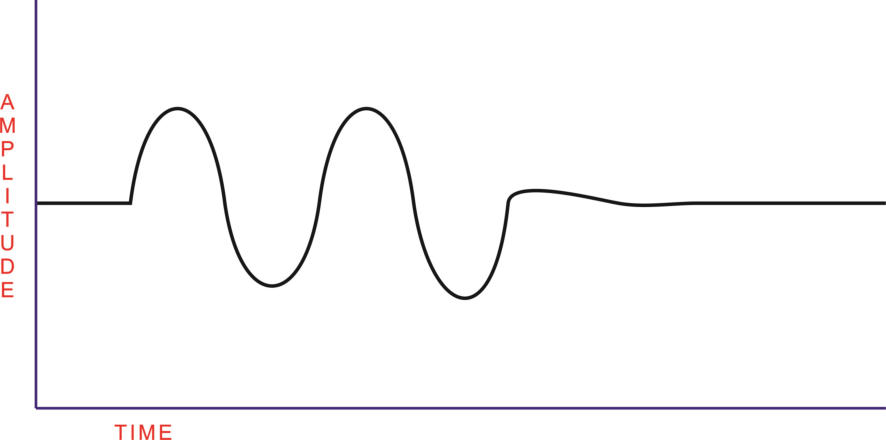



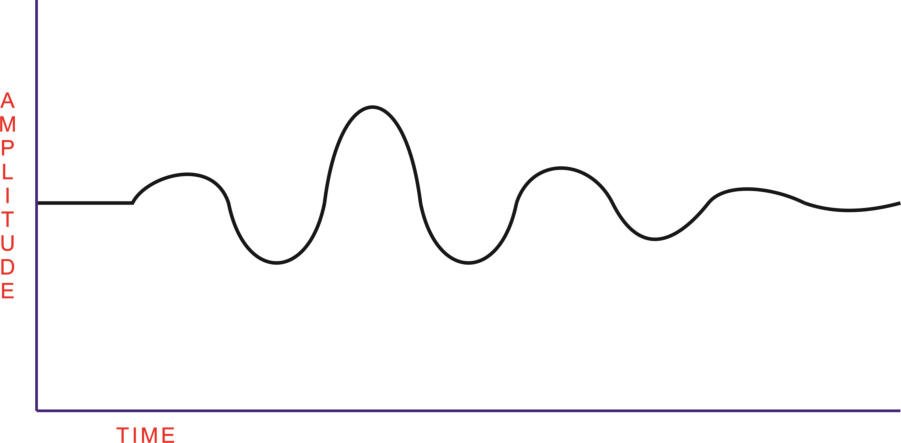
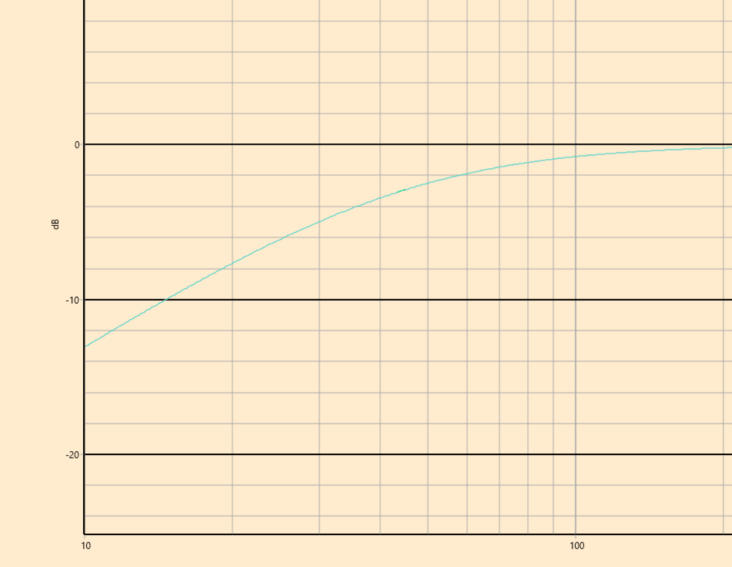
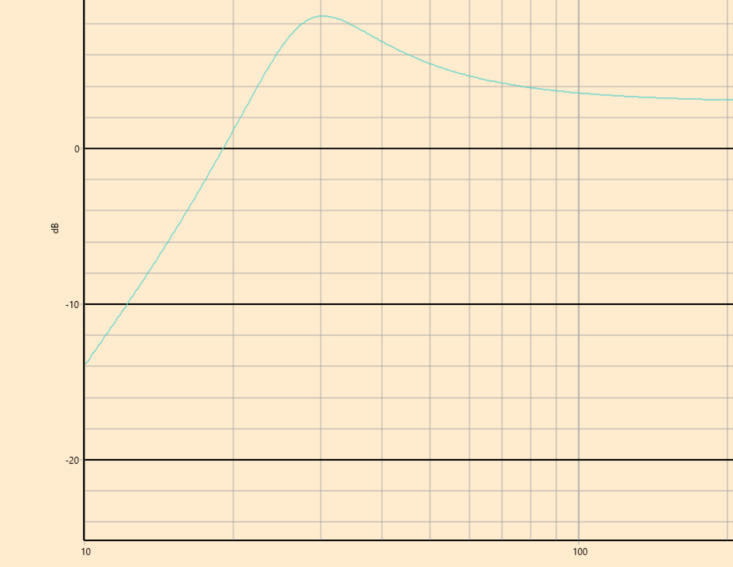
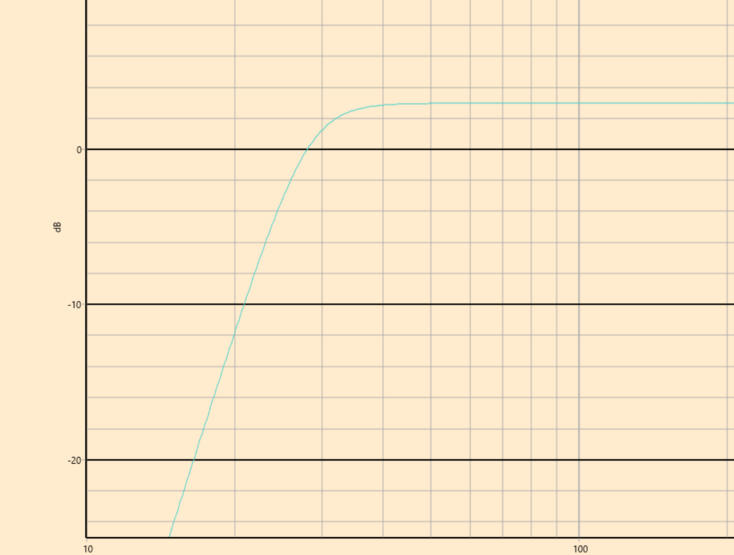

#3 A NEW AND SUPERIOR BASS SYSTEM
ALIGNMENT
This idea is one of two substantial advances in
bass system design that took me some time to
discover.
Conventional vented alignments have always
been a compromise between two opposing
goals. You want extension down to as low a
frequency as possible and you want the woofer
to faithfully follow the signal for best
resolution. Too bad, those goals trade against
each other, because a vented alignment is a
resonant system; it achieves its extension by
ringing. Again, ringing is bad; energy is
absorbed and released later. So this tricky bit
of engineering involves “splitting the baby”.
Some ringing, yes, but just enough to get a full
bodied sound, but not so much that it sounds
tubby and loose.
I should note that, owing to infernal “spec
chasing” and the marketing need for
“showroom pzazz”, many designers stray in
favor of extension.
Let’s look at this graphically. To make the point
easy to see, we’ll work with a signal that starts
and stops abruptly, called a gated sine wave.
By observing what comes out of the speaker,
one can evaluate how well the system starts
and stops.
Ideally, the output will look like input, but a
vented alignment will actually do this: slow to
rise as the resonant system absorbs energy,
then slow to stop as it rings on. The inside joke
is, you get all the bass you paid for, just a little
late. In the worst cases, the bass actually
sounds like it’s slow and off the pace, because it
is.
All these years, the most savvy designers have
wanted to build bass systems for best signal
tracking, and have always known how to do
that. Use a woofer with a very coercive motor
and a light moving system. Basic Newtonian
physics: F=MA. The lower the Mass and the
higher the Force, the greater will be the
Acceleration. Place that woofer in a bass
alignment called “critically damped” - just the
right amount of “air spring” in a closed box and
BANG, you get signal tracking like this:
Great, right? Nope. You get no low bass. The
moving mass is low, there is minimal ringing, so
you get unacceptably rolled-off bass. You’ve
never heard one of these on a showroom floor.
If you had, you’d’ve thought, “Wow, that’s quick
and resolving, but where’s the bass?”
The solution is simple, and constitutes the first
new bass system alignment in my lifetime. Just
as DSP gives us the power to up our DR game,
as we discussed in section #2, DSP gives us the
tool we need here. Simple: use DSP to force
that, otherwise superb, system to make low
bass! Another free lunch? Well, not exactly, the
idea does require gobs of power and the driver
does need to be robust with great cooling.
Short and sweet, we run a critically damped
system, equalized with boost, and combined
with a high pass filter.
Let’s say our critically damped system’s
acoustic output looks like this:
We apply a high pass filter with boost like this:
Voila! Those two functions sum to this:
The icing on the cake is that this alignment
takes up less space than its vented counterpart.
Smaller and better? Just my two cents - any
designer who is using DSP, but who is still using
vents or passive radiators to make low bass,
just hasn’t figured this out yet. This is probably
the #1 reason why Next Gen will destroy
conventional audio in a head-to-head sound
off.
